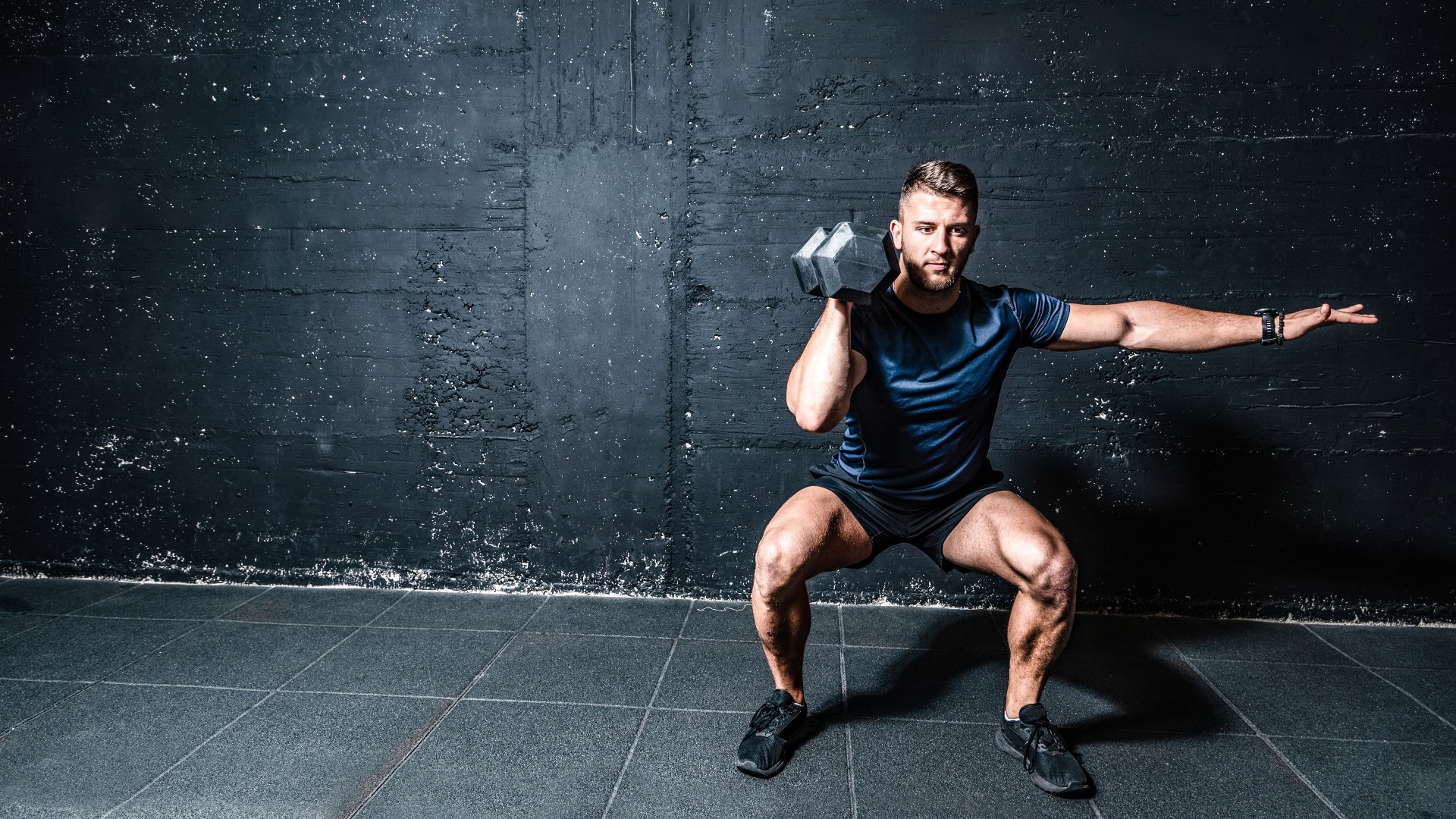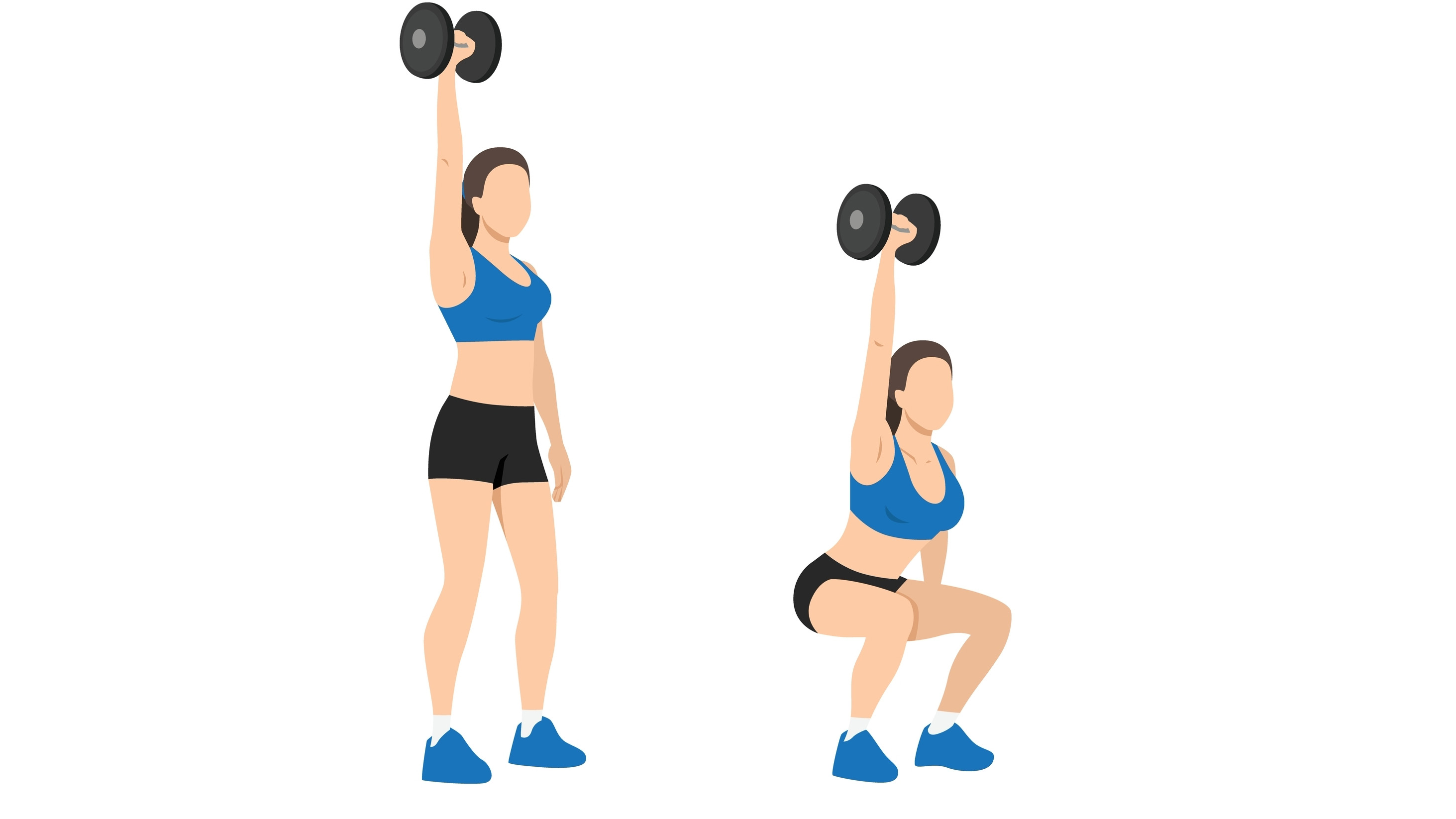
Lunges are a divisive lower body exercise to program on leg day; if you have knee issues, some people find even reverse lunges are off the table.
The leg exercise is brilliant at strengthening your glutes, quads, hamstrings and calf muscles while stretching your hip flexors. Still, if you’ve crossed lunges off the list, you only need these five lower-body exercises and one of the best adjustable dumbbells to activate your glutes and blow up your legs.
If you haven’t got an hour to spare, or you’re exercising using just a dumbbell or kettlebell, carve out 25 minutes and try these five leg exercises. Here’s how to do them and a five-move leg workout to try.
Forget lunges — what are the 5 lower-body dumbbell exercises?
You don’t need to overcomplicate leg day — here are five dumbbell leg exercises to try.
1. Overhead dumbbell squats

Overhead squats test joint mobility and challenge squat depth. To do the exercise, keep your heels planted, chest lifted and arms positioned overhead with the dumbbell aligned with your shoulders. It’s far harder than a regular squat and improves your core, back and shoulder stability while mobilizing the spine, hips, knees and ankles.
Hold the dumbbell overhead with both hands. If you have experience with overhead squats, try holding the weight in one hand and alternate sides. Set up for a squat, bend your knees, keep the weight spread through your feet, send your hips back and lower into a deep squat position. Keep the dumbbell stacked over your shoulders and biceps aligned with your ears. Push through heels to stand.
2. Dumbbell step-ups

Dumbbell step-ups challenge coordination and balance and work muscles unilaterally, meaning one side at a time. It’s a great way to strengthen muscles evenly and explosively, while the dumbbell increases resistance on the muscles through a greater range of motion. It’s one of the best ways to hit your quads and glutes hard.
Get instant access to breaking news, the hottest reviews, great deals and helpful tips.
Stand with a box or bench in front of you, and either hold a dumbbell by your side, in both hands using a goblet hold position, or racked at the shoulder. Brace your stomach, step onto the step with one foot and drive upward, planting the foot on the box. As you drive up, place your other foot on the bench hip-width apart. Step back down, alternating your leading leg each time for reps.
3. Dumbbell Good Mornings

Hello, Good Morning! The exercise is commonly executed by placing a barbell across your upper back, but you can replace this with one heavy dumbbell. Good Mornings work the posterior chain muscles, including your back, glutes, hamstrings and calf muscles. Work to your existing range of motion and avoid overextending or flexing the spine.
Start with a medium to heavy dumbbell across your upper back and grip the ends with both hands. Engage your core and stand tall with feet hip-width apart and a soft knee bend. Begin by sending your hips behind you and hinging forward, lowering your chest until you reach a tabletop position. You should feel activation in your glutes and hamstrings. Pause, then drive up to stand and squeeze your glutes.
4. Dumbbell front squat with 3-second pause

The front rack squat front-loads the body and torches your glutes, legs, upper back and core muscles, particularly the muscles in the anterior chain, including your quads, just like a barbell front squat. Using one dumbbell offsets the body to work unilaterally, challenging coordination, balance and core stability.
Start with the dumbbell in a front rack position at one shoulder and drive your elbows forward without dropping them. Set up for a squat, then bend your knees and lower into a squat with a flat back and without leaning forward. Once you reach full depth, pause for three seconds to build tension in your muscles, then drive up through your heels to stand.
5. Dumbbell sumo squat low hold

The sumo squat famously hits your outer glutes (the gluteus medius) harder and activates the inner thighs (the adductors) using a wide foot position. For this variation, hold a dumbbell in both hands in front of you with arms extended.
Start with feet wider than shoulder-width apart and toes pointed slightly outward. Hold the dumbbell in both hands in front of you with your arms extended. Squat down and send your hips backward, keeping your chest lifted and back neutral. Lower until the dumbbell taps the floor between both feet, then drive up to stand and squeeze your glutes. You could play around with this exercise using different racking variations, such as a front rack, goblet hold, or overhead dumbbell position.
5-move dumbbell leg workout to try in just 25 minutes
EMOM x 5 rounds
Dumbbell overhead squat x 10-12 reps
Dumbbell step-ups x 10-15 reps
Dumbbell Good Mornings x 10-12 reps
Dumbbell front rack squat x 10-12 reps
Dumbbell sumo squat x 10-12 reps
Complete your first exercise for the set reps within the minute, then rest until the next minute begins, then start the next exercise. One round will take five minutes, and five rounds will total 25 minutes.
Load each exercise heavy enough that the reps feel challenging to complete within the time frame. Choose a heavier weight if you finish with more than 10-15 seconds before the next minute. These reps are only guidelines, so if you need to scale up or down, aim to only rest for 10-15 seconds each round.
Can you do leg day with just dumbbells?
The benefits of training legs with dumbbells are many. Dumbbell leg exercises can target multiple muscle groups and the deeper, stabilizing muscles that support safe movement, including your core muscles.
As we explain in the gym machines vs free weights debate, free weights like kettlebells, barbells and dumbbells are more challenging for your muscles and could help build muscle and functional strength. Besides, you’re more likely to get access to them during peak gym times when there’s a queue for the resistance machines.
You can work unilaterally with dumbbells and with more freedom using a more natural range of motion. Although barbells are better for maximal loading, you can also develop grip and forearm strength while holding dumbbells during leg exercises.
More from Tom's Guide
- 9 things I wish I had known as a CrossFit beginner
- This 3-move dumbbell standing ab workout chisels your abs and obliques
- I did a 5-minute plank every day for a week, here's what happened to my abs

Sam Hopes is a level 3 qualified trainer, a level 2 Reiki practitioner and fitness editor at Tom's Guide. She is also currently undertaking her Yoga For Athletes training course.
Sam has written for various fitness brands and websites over the years and has experience across brands at Future, such as Live Science, Fit&Well, Coach, and T3.
Having coached at fitness studios like F45 and Virgin Active and personal trained, Sam now primarily teaches outdoor bootcamps, bodyweight, calisthenics and kettlebells.
She also coaches mobility and flexibility classes several times a week and believes that true strength comes from a holistic approach to training your body.
Sam has completed two mixed doubles Hyrox competitions in London and the Netherlands and finished her first doubles attempt in 1:11.
